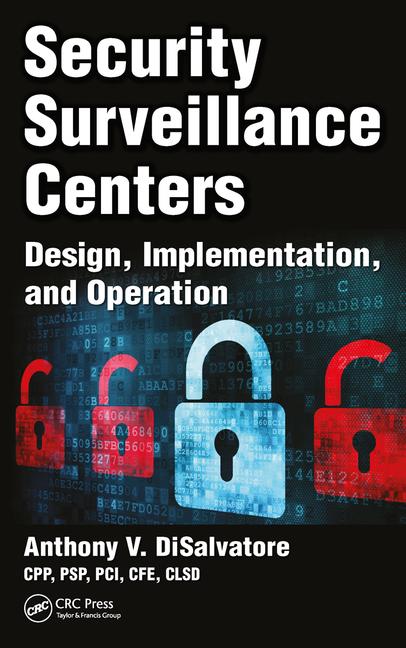Beyond Security: Business Solutions for IP Networks
‘Solution’ sales are becoming more of a reality with the growth of IP networks.

The security and video surveillance market is changing as all areas of the enterprise embrace the capabilities of networking. The surveillance market looks a lot different than it did several years ago when analog technologies were the norm and most security systems operated independently. This presents both challenges and opportunities for security dealers and systems integrators. It is a challenge to learn and adapt to the new technologies, but the rich opportunities include new ways to sell interconnected business solutions to serve a broader range of customers’ needs — and to benefit an integrator’s bottom line.
Networking has eliminated many obstacles to integration for security systems including access control, alarms, video and intercoms. Any technology that a security integrator is likely to sell has migrated — or is in the process of migrating — to an IP platform. The same is true for other business operations that live on the network.
Tech Electronics Inc., a St. Louis, Mo., integrator with six locations in the Midwest, is embracing the change, delivering a variety of systems for business, industry, government, healthcare and education. “Systems integrators who are truly integrators can combine multiple product lines, from voice-over-IP to fire alarms to security, into a total solution, and that takes a different level of technical capabilities,” says Tracy Markum, systems manager, Tech Electronics. The company supplies security and video systems, as well as telephone, mass notification, nurse call, fire alarm, IT services, pro audio/video systems and monitoring services. The integrator focuses on providing a unified “total solution” built around IP networking to each customer.
“The customer is becoming much more sophisticated and technology-driven,” Markum comments. Tech Electronics has a converged IT department that works with each customer’s IT department to create a network hub on which various applications can be combined into a total solution. The “team” approach enables each system to manage issues effectively such as bandwidth, cabling and the network structure. The resulting combined systems work to “achieve a goal, satisfy a need or solve a problem,” Markum describes. Importantly, the strategy avoids creating collateral problems, such as insufficient bandwidth or storage, which might result from a more fragmented approach. Bandwidth issues include both the capacity of physical cabling and also whether there is sufficient wireless bandwidth (without interference) to accommodate the expanding range of systems that use it, from cell phones to tablet computers, to the nurse call systems or electronic medical records systems used in hospitals.
Changing the Mindset
How many integrators are really embracing the new mindset required to succeed in the networking world? The technical obstacles to integration among a broad spectrum of technologies are
disappearing, but many integrators still work within perceived limitations of system design that have been outdated for years.
For example, some integrators may still think of the various components of security systems as separate product categories, installing a video system for one customer and an access control system for the next. A better mindset is to use a solutions approach that incorporates all of the customer’s current needs and paves the way for future needs and enhancements. Applying this mindset can be as simple as considering the future scalability of a system or choosing technology that is particularly well-suited to be combined with other types of systems in the IP environment. Understanding other business systems that utilize the network opens many additional doors to integrators, as well.
There are numerous ways integrators can change their approach to the market to ensure continuing success and to streamline the customer experience in the changing IP systems environment:
Learn, Train, Educate
In order to embrace a solutions approach to sales, an integrator must first understand network technology and have an IT-centric workforce trained and experienced in network systems. Having employees with networking certifications from top providers demonstrates an integrator’s commitment to IP systems. Integrators who are true advocates of IP systems, who know and appreciate their advantages, will be rewarded with more business.
Educating the customer is a core part of Tech Electronics’ approach to the market, Markum emphasizes. “We educate the customer’s various departments about how their decisions affect other departments.” He sees a change in the decision-making process among customers, with more people involved, including IT departments and financial managers.
Sales tools can help to educate prospects on the advantages of an IP solution, whether it’s sales sheets, Web resources or brochures. All marketing material should emphasize the benefits of a solutions approach that encompasses a variety of product groups based on the needs of each customer. Integrators also should provide customers with a total cost of ownership (TCO) analysis to spell out in dollars and cents the short- and long-term impact of their equipment and system choices. Cost analysis should encompass the value of using the network for multiple applications and promote an approach of investing in network infrastructure now that will provide low-cost benefits later as new systems are added.
Expand Your Repertoire of Equipment Choices
The growing ability to incorporate multiple products into a networked solution suggests that now is a great time for integrators to bring additional products into their mix. While your focus may have been on video or on access control, look at the range of other products that can become part of a networked solution. Every new product category an integrator can offer a customer has the potential to equal additional revenue, and the IP integration skills that are so critical to success in the new market translate well from one product category to the next. It’s easy for an IT-savvy integrator to expand the breadth of his or her product offerings to include an even wider choice of security products, and to go beyond to include audio systems, interactive whiteboards, IP phone systems, video conferencing and more.
New equipment capabilities also play into the idea of viewing the enterprise-wide benefits of a technology rather than only those specific to the security department. An example is new video recorders that provide features such as people counting or determination of relative age and gender. These products have benefits beyond security; for example, they can help retailers analyze market trends and demographics. Many equipment providers are working to eliminate sales channel obstacles to make it easier for integrators to cross-sell into multiple categories and offer customers access to a greater set of technology solutions.
Markum sees this greater willingness among suppliers to eliminate barriers and encourage broader system sales. “We are hearing from [suppliers] that the silos are being eroded,” he says. New efficiencies also can include the ability to work with a single point of contact for multiple product lines.
To make way for more technology choices, Tech Electronics has a winnowing process in place concerning product selection as a way to simplify technician training and promote efficiency. “We have cut our video product selections in half,” Markum says. “Bringing in new products is a thoughtful process with consideration to how each product will impact operations,” he adds.
Go Deeper in Specific Verticals
Vertical-market specialization is a time-proven strategy of a successful integration business, and the network environment makes it easy for integrators to expand their vertical focus into additional product categories to increase their business. Integrators should choose specific vertical markets and then leverage their existing core capabilities to offer solutions tailored to those verticals. In corporate environments, for example, networking skills enable expansion into business systems such as IP phone systems and video conferencing. In the education vertical, classroom audio systems and interactive whiteboards are hot products, and there are even opportunities to integrate them with security systems to provide helpful emergency response scenarios. For the retail vertical, point-of-sale (POS) terminals offer a new source of business that ties into an integrator’s core video focus. Combining POS and video provides new efficiencies for end-users, particularly in a multi-site business. Other possibilities include mobile computers and video systems for government and public safety/law enforcement applications and ruggedized laptop computers and mobile clinical assistants for the healthcare vertical.
Markum notes that decision-making processes vary widely from one vertical market to the next. For example, buying decisions on university campuses are more likely to be decentralized as each individual department or division of the college chooses what they need for their systems, whether it’s three buildings in the business college or two buildings in the nursing department. In contrast, government decisions are becoming more centralized, often made at the district, state or even national level in order to ensure a unified platform. In response, Tech Electronics employs vertical market business managers who specialize in the needs of each market.
Transform Your Approach to the Market
The best strategy for expanding your solutions business is to take a new approach to the market. This should be reflected in every aspect of the business, starting with the language you use to describe products and systems. Focus on describing the practical benefits of networking and the additional capabilities a comprehensive solution can provide for the customer. You can also broaden the range of topics you discuss with customers, helping to expand their mindset into new categories of business. It’s about being more proactive in understanding and analyzing customer needs and translating those needs into real-world solutions that use the best technology can offer.
The approach of successful integrators, such as Tech Electronics, is focused less on product and more on identifying customer pain points and overall goals and designing an all-encompassing approach. “Not everyone is looking for a pure security solution,” Markum explains. “You’re seeing video surveillance being used for non-security uses such as workflow analysis, worker protection and increasing efficiencies.”
The potential rewards of a solutions approach are huge, from broader and deeper opportunities with existing customers to a new pool of potential business based on an expanded product mix. All it takes is a fundamental change in how an integrator approaches the market — a change well worth making.
Looking for a reprint of this article?
From high-res PDFs to custom plaques, order your copy today!



_feature.jpg?height=200&t=1335189188&width=200)



